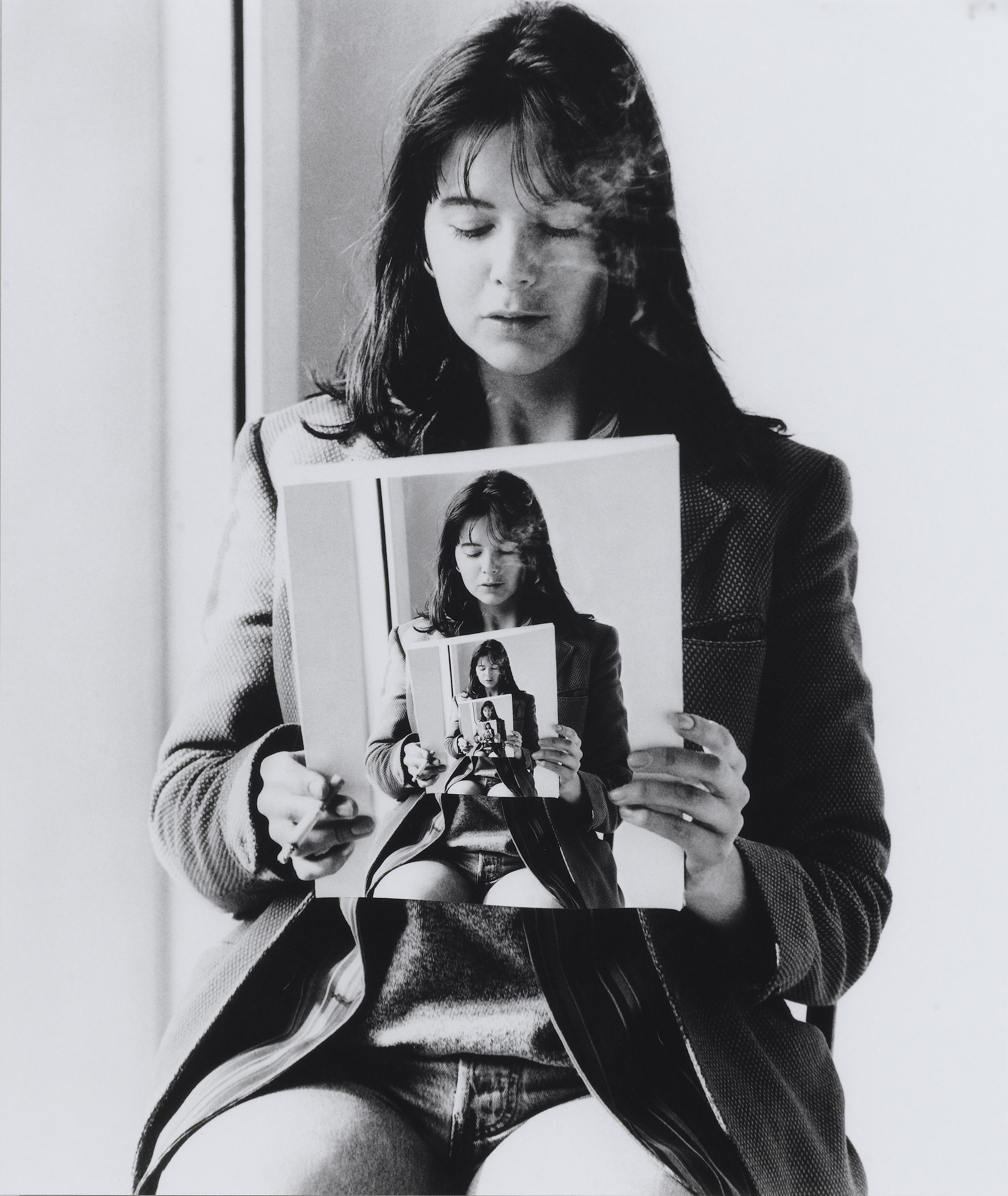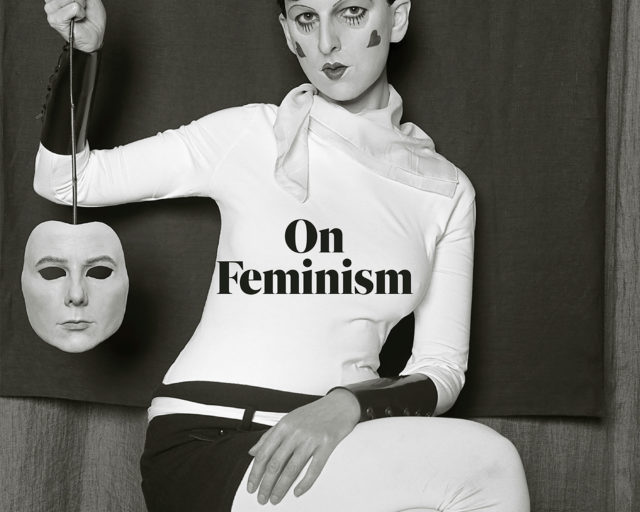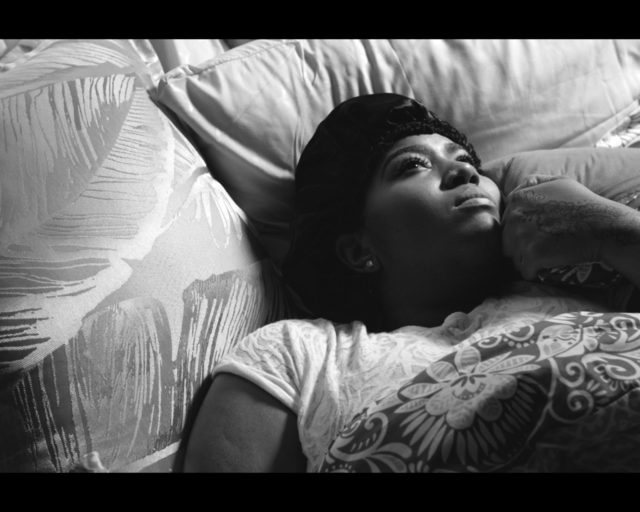Gillian Wearing, Me: Me, 1991
One of the most arresting images in Gillian Wearing’s rich and multilayered survey at the Solomon R. Guggenheim Museum stages an imagined encounter between the Swiss Surrealist Meret Oppenheim and the photographer Man Ray, for whom she was an occasional muse and model. In real life, May Ray made numerous portraits of Oppenheim, soon after Alberto Giacometti introduced the two to each other in Paris. Most famous among them is Man Ray’s Erotique voilée (1933), where Oppenheim stands, strategically posed, behind the oversized flywheel of a printing press, her hand and forearm smeared with ink, the handle of the wheel appearing to protrude from her pelvis. But never in the course of actual events did Man Ray take a picture of Oppenheim seated before a wall of mirrors, fracturing her face, arms, and chest into intriguing triangular shards. That’s all Wearing’s invention.
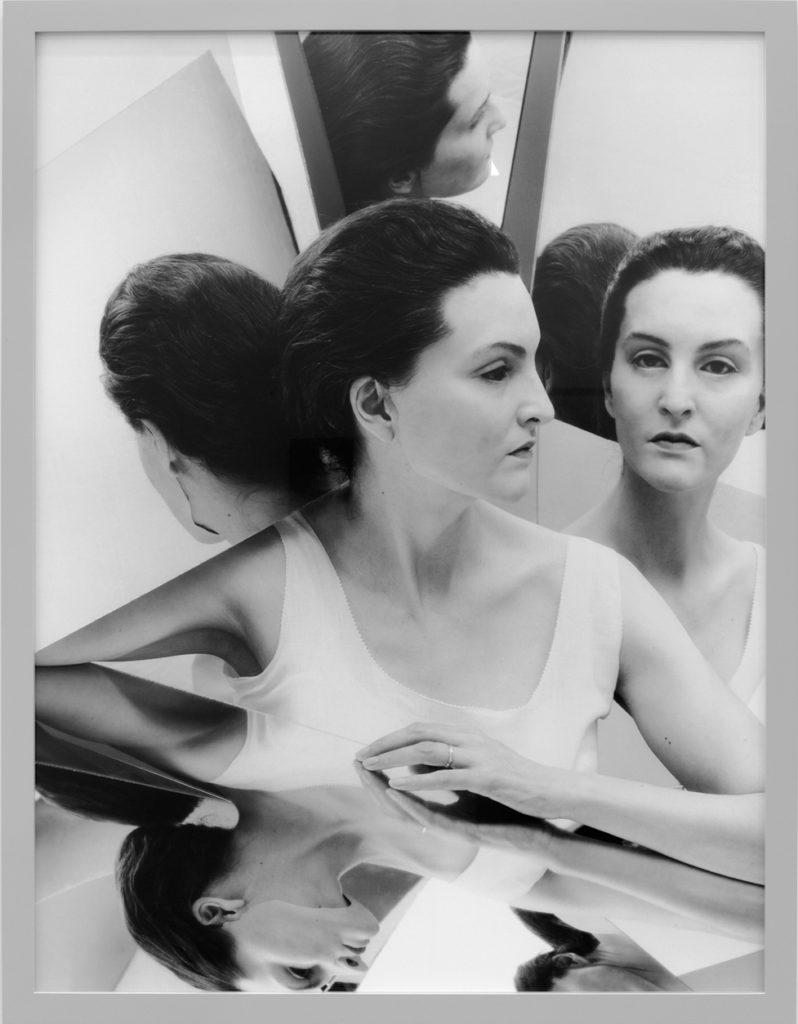
Me as Meret Oppenheim (2019) is one of fourteen photographs in Wearing’s Spiritual Family series, and the first to have sprung entirely from her own imagination. Previously, she based her compositions on existing images—portraits of Julia Margaret Cameron, August Sander, Weegee, Diane Arbus, and Robert Mapplethorpe, for example—and then worked with custom-made clothes, silicone masks, sometimes an entirely purpose-built set, to recreate the exacting details. With Me as Meret Oppenheim, Wearing scripted a fictional scenario instead, and then set out to realize it.
All of the images in the Spiritual Family series take months to complete. For the Oppenheim portrait, it took Wearing eight hours just to get the shot, a long time to be looking at multiple reflections of herself disguised as someone else—an artist she admired, perhaps emulated, and momentarily embodied. “At the end of the day,” she recalls in an interview with herself (of course) in the Guggenheim’s accompanying catalogue, “when I saw my own face, it seemed a little bit alien to me.”
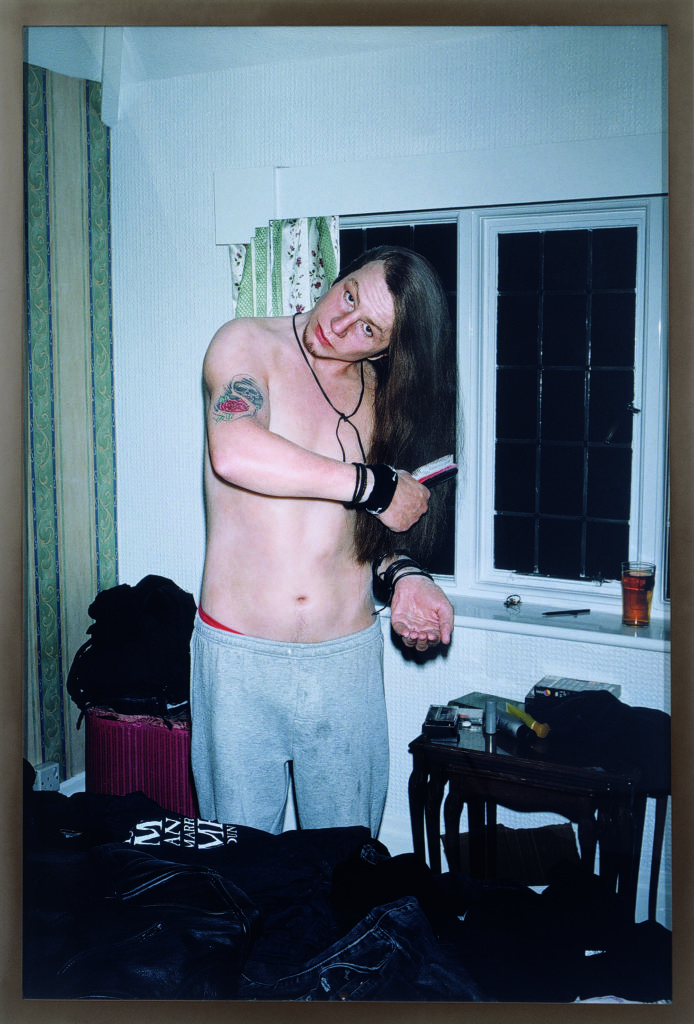
Gillian Wearing: Wearing Masks, curated by Jennifer Blessing and Nat Trotman, is, remarkably, the artist’s first retrospective in North America, and covers thirty years of deceptively straightforward conceptual work. Featuring a wealth of photographs and videos as well as oil paintings, watercolors, drawings, sculptures, installations, 3D-printed objects, light boxes, and wallpaper, the show is generously spread across four capacious floors. The curators have divided the work into meaningful thematic levels, but the experience of following the lines of thought between them is nevertheless disjointed by the fact that Wearing Gillian has been slotted into four of the five tower galleries rather than sluicing down the museum’s iconic ramps—which seems to be the fate of women photographers at the Guggenheim (monographic surveys for Catherine Opie in 2008–9 and Carrie Mae Weems in 2014 were similarly installed). Still, the sheer density of materials is further amplified by a parallel screening program and a clear, resonant echo in the world outside of the institution. Wearing’s concurrent project with the Public Art Fund has placed a painted bronze statue of Diane Arbus, standing directly on the paving stones, without a pedestal, at the Fifth Avenue and 59th Street entrance to Central Park, through August 14, 2022.

Courtesy the Solomon R. Guggenheim Foundation
Wearing may have started out—and won the Turner Prize in 1997—as an artist primarily informed by candid street photography and the confessional culture of late-twentieth-century television talk shows, an interest that carries through to her two-channel video installation Fear and Loathing (2014), one of several projects involving members of the public invited to share their secrets in an intimate setting while keeping their faces hidden. But Wearing Masks is the work of an artist who is not only adept at working in a greater range of media. It is also evidence of her ambition, charting a serious and far-reaching constellation of social, historical, artistic, and philosophical concerns.
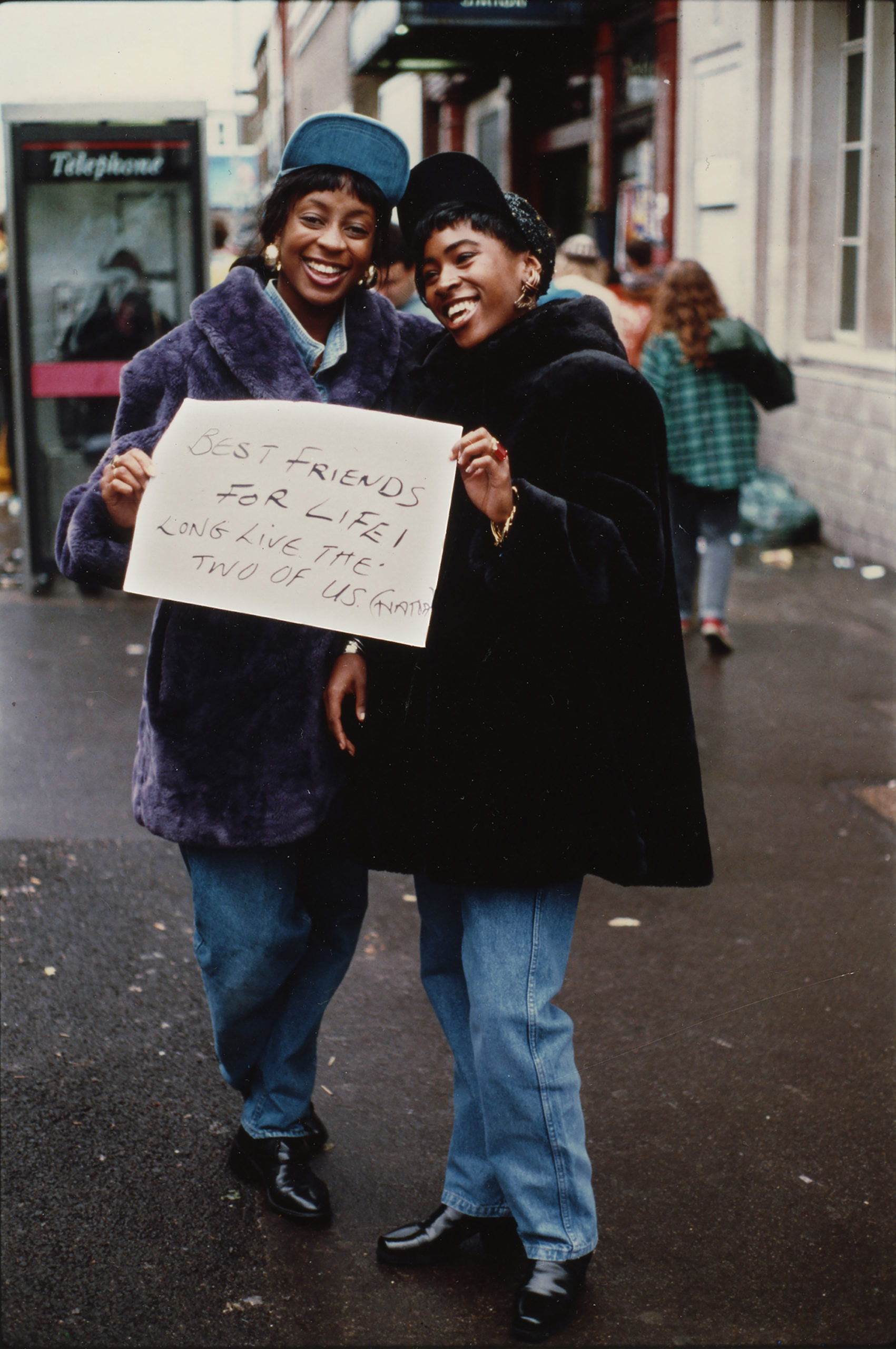

The exhibition begins, as it were, with some of Wearing’s best-known work, including the marathon Dancing in Peckham (1994), a twenty-five-minute video where the artist dances alone, to no music, in the middle of a shopping mall; the grueling Bully (2010), in which members of a method-acting workshop recreate an experience of adolescent cruelty; and the monumental, mural-sized installation of the series Signs that say what you want them to say and not Signs that say what someone else wants you to say (1992–93), where people that Wearing encountered on the street hold up hand-scrawled messages, by turns random, silly, and revealing in terms of the contradictions between public and private selves. A smirking young man in a corporate suit holds up one sign reading “I’m desperate.” A teenage girl with a smile like the break of dawn holds up another reading “I hate this world!!”
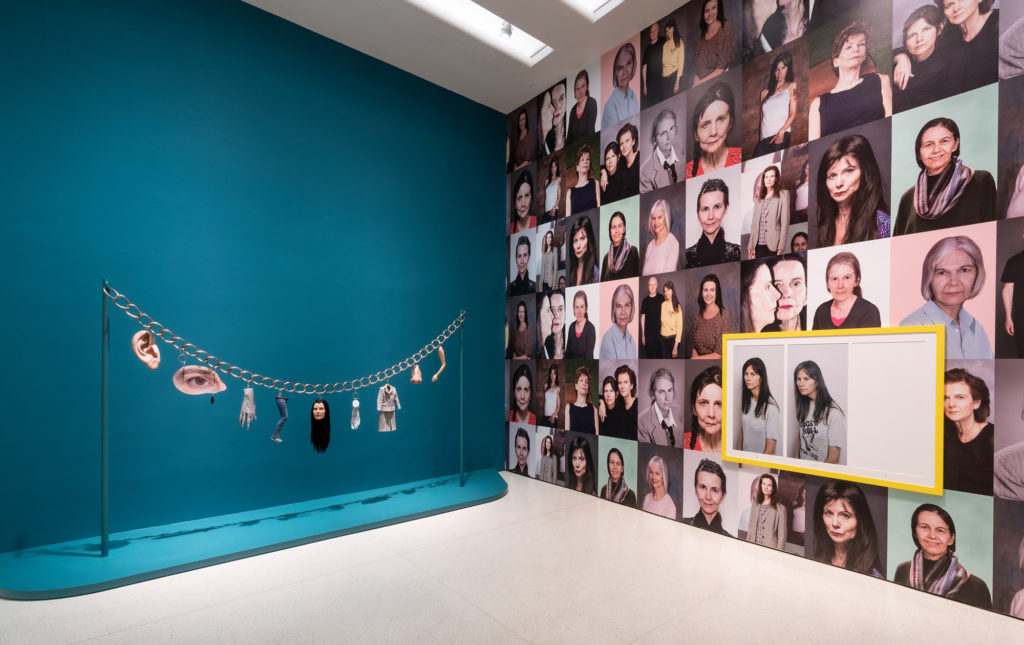
Courtesy the Solomon R. Guggenheim Foundation
These excursions into the realm of the social give way, one floor up, to considerations of family relations, generations, and genealogies. Here, one of Wearing’s toughest videos to watch, the mesmeric, incremental, and, despite being just four minutes long, overwhelmingly violent Sacha and Mum (1996)—with a matronly lady in a glitchy, black-and-white sequence seeming to use a bath towel to suffocate a young woman in her underwear—sits alongside the sad portraits of the series A Woman Called Theresa (1998), of a “street drinker” trying and failing to find love (or at least tolerable companionship) with a rotation of hopeless and hapless men. In this section, the exhibition moves deftly through Wearing’s carefully composed portraits, all of them in fact stealthy self-portraits, of her parents and siblings and former selves (using yet more silicone masks to depict herself at age three, seventeen, and so on), and then segues masterfully into the terrific and subtle Snapshot (2005), a looping, seven-channel video representing seven still photographs of women or girls in seven decades of the twentieth century.
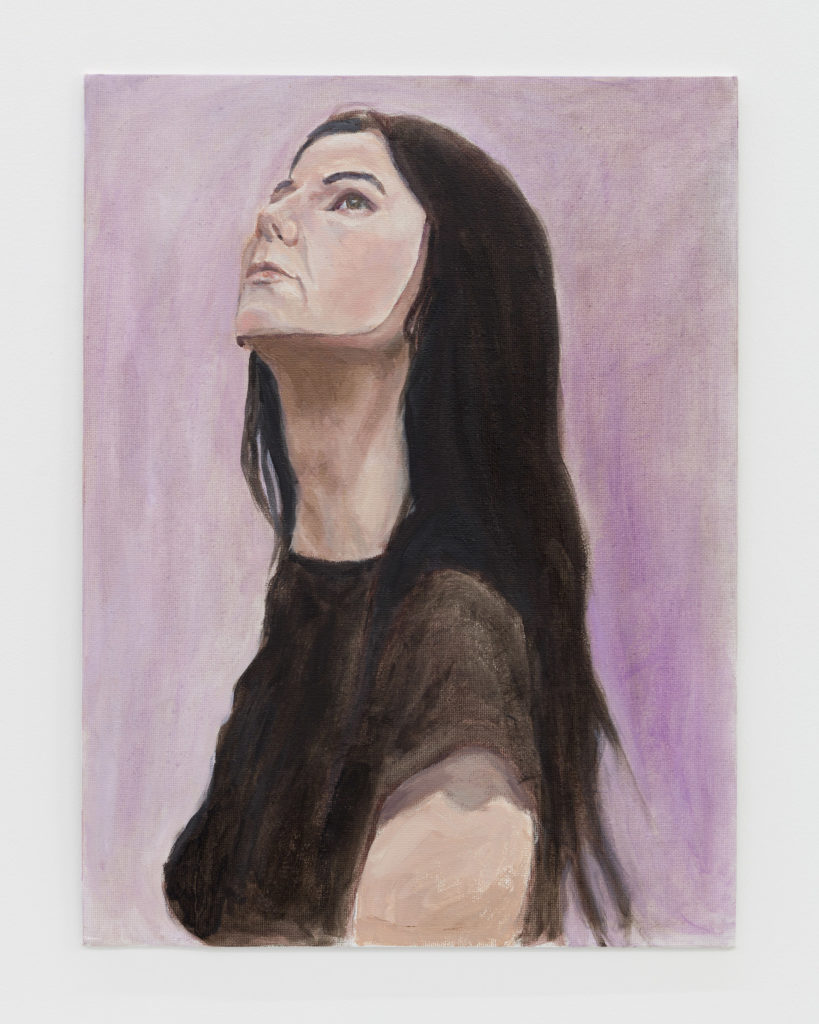
Skip up to the exhibition’s top floor and “Wearing Gillian” barrels headlong into the rabbit hole of identity, interiority, and the malleable stuff of meaningful selfhood. Here, with a series of paintings Wearing made during lockdown, the show merges perfectly with the many moods of the sadly still ongoing COVID-19 pandemic (when the lockdown paintings, all self-portraits, were shown last year in London, critics wondered if they represented “the real” Wearing stripped of her many masks). The pièce de résistance is a collaboration with Wieden + Kennedy, a brash advertorial-style video of multiple AI-assisted actors playing the self-effacing artist named Gillian Wearing.

All works courtesy Maureen Paley, London; Tanya Bonakdar Gallery, New York/Los Angeles; and Regen Projects, Los Angeles
But to get there, one passes through a crucial pivot, which is the third floor devoted to her Spiritual Family series. There, Wearing’s evocations of drag, masquerade, and disguise—alongside her considerations of gender, identity, and artistic persona as inherently constructed and perpetually performed—carry the most weight, and also reach farthest from the artist herself into the realm of ideas. The questions raised by these portraits—of herself as Georgia O’Keeffe, as Claude Cahun, as Andy Warhol in drag exposing major scars on the torso, as Marcel Duchamp paired in an oversized locket with his own gender-bending double Rrose Sélavy—are many and multifaceted, delving into the work that art does in the world and the lives (and afterlives) that images somehow allow us, or free us, to lead.
Gillian Wearing: Wearing Masks is on view at the Solomon R. Guggenheim Museum, New York, through April 4, 2022.










